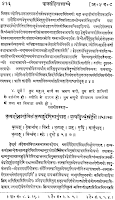The first two lines in the Commentary for 1.50.4 (in Sanskrit) for the mantras dedicated to Surya in this Sukta have the meaning (given below). These mantras are commonly recited by brahmins as part of a Soura Suktam (Hymns dedicated to the Solar Orb).


This post at Sanskrit-list as well as these archives helped.
Regarding Speed of Light:
There are 2 quotes. I will try to reproduce as given in the book:
taraNirvishvadarshato jyotiShk^Ridasi sUrya | vishvamAbhAsi rochanam |
Oh Sun! (You) overwhelm all in speed, visible to all, source of light. (You) shine pervading the Universe.
tathA cha smaryata yojanAnAM sahasram dve dve shate dve cha yojane | ekena nimiShArdhena kramamANa namo&stu te ||
It is remembered (that) Salutations to Thee (sun), the traveller of 2.202 yojanas in half a nimiSha.
Source:
Rg-veda-samhitA, maNDalam 1, sUktam 50, mantraH 4 (6000 DCE) sAyanAchArya's commentary (14th century AD)
Also read Atanu's take on the issue. Please read it carefully, as carefully as you read the above reference from Sayana's bhashya. It is important to understand both positions.
Also, before you associate the Solar orb to the visible sun around which planet earth revolves, read this dialogue on Sandhya Upaasana, when Chandrasekhara Bharathi Swamiji (of the past century) clearly says that such an association is made with an incomplete understanding.
Read the rest of this entry >>



